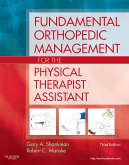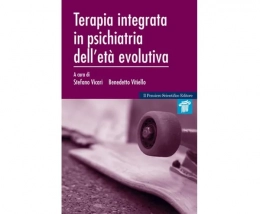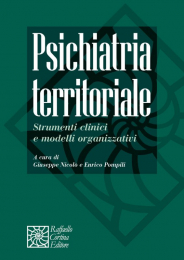Non ci sono recensioni
|
Designed to meet the unique needs of physical therapist assistants, Fundamental Orthopedic Management for the Physical Therapist Assistant, 3rd Edition focuses on critical thinking and helps you apply fundamental orthopedic principles in physical therapy interventions. Clear explanations cover basic concepts such as the PTA's role in physical assessment of flexibility, strength, endurance, and balance, along with the specifics of tissue healing; medications; gait and joint mobilization; and an introduction to biomechanics. It also describes the application of therapeutic interventions for many orthopedic conditions by region and affliction. Edited by two experienced clinicians, Gary A. Shankman and Robert C. Manske, and written by contributors who are experts in their respective fields, this is your one-stop source for PTA practice in orthopedics. |
| Features: |
|
| New To This Edition: |
|
Table Of Contents:
Part I: Basic Concepts of Orthopedic Management
1. Patient Supervision and Observation During Treatment
2. The Role of the Physical Therapist Assistant in Physical Assessment
3. Flexibility
4. Strength
5. Endurance
6. Balance and Coordination
Part II: Review of Tissue Healing
7. Composition and Function of Connective Tissue
8. Ligament Healing
9. Bone Healing
10. Cartilage Healing
11. Muscle and Tendon Healing
12. Neurovascular Healing and Thromboembolic Disease
Part III: Common Medications in Orthopedics
13. Concepts of Orthopedic Pharmacology
Part IV: Mobilization And Biomechanics
14. Fundamentals of Gait
15. Concepts of Joint Mobilization
16. Biomechanical Basis for Movement
Part V: Management of Orthopedic Conditions by Region
17. Orthopedic Management of the Ankle, Foot, and Toes
18. Orthopedic Management of the Knee
19. Orthopedic Management of the Hip and Pelvis
20. Orthopedic Management of the Lumbar, Thoracic, and Cervical Spine
21. Orthopedic Management of the Shoulder
22. Orthopedic Management of the Elbow
23. Orthopedic Management of the Wrist and Hand
Part VI: Management of Orthopedic Conditions by Affliction NEW!
24. Orthopedic Management of Rheumatic Disorders NEW!
25. Orthopedic Management of Pain and Pain Syndromes NEW!
26. Orthopedic Management of Bracing, Orthotics, and Prosthetics NEW!
Appendices
A: Commonly Used Medications in Orthopedics
B: Reference Ranges for Commonly Used Tests
C: Units of Measurement and Terminology for the Description of Exercise and Sport Performance
D: Fracture Eponyms
E: Major Movements of the Body and the Muscles Acting at the Joints Causing the Movement




